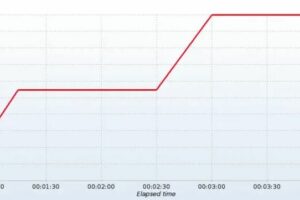前言
❝假设你的系统里有100万个用户,然后你要轮询重试的获取每个用户的身份信息, 如果你还在使用SpringRetry和GuavaRetry 之类的这种单任务的同步重试框架,那你可能到猴年马月也处理不完, 即使加再多的机器和线程也是杯水车薪, 而Fast-Retry正是为这种场景而生
Fast-Retry
一个高性能的多任务重试框架,支持百万级任务的异步重试、以及支持编程式和注解声明式等多种使用方式、 也支持自定义结果重试逻辑。
What is this?
与主流的Spring-Retry, Guava-Retry等单任务同步重试框架不同,Fast-Retry是一个支持异步重试框架,支持异步任务的重试、超时等待、回调。Spring-Retry, Guava-Retry均无法支持大批量任务的重试,即使加入线程池也无法解决,因为实际每个重试任务都是单独的同步逻辑,然后会会占用过多线程资源导致大量任务在等待处理,随着任务数的增加,系统吞吐量大大降低,性能指数级降低,而Fast-Retry在异步重试下的性能是前者的指数倍。
下图是三者的性能对比
-
测试线程池: 8个固定线程 -
单个任务逻辑: 轮询5次,隔2秒重试一次,总耗时10秒 -
未测预计公式:当我们使用线程池的时候, 一般线程池中 总任务处理耗时 = 任务数/并发度 x 单个任务重试耗时
| 任务数 | FastRetry | Spring-Retry | Guava-Retry |
|---|---|---|---|
| 1 | 10秒 | 10秒 | 10秒 |
| 10 | 10.066秒 | 20.092秒 | 20.078秒 |
| 50 | 10.061秒 | 70.186秒 | 70.168秒 |
| 100 | 10.077秒 | 130.33秒 | 130.31秒 |
| 500 | 10.154秒 | 631.420秒 | 631.53秒 |
| 1000 | 10.237秒 | 1254.78秒 | 1256.28秒 |
| 5000 | 10.482秒 | 没测预计:6250秒 | 没测预计:6250秒 |
| 1万 | 10.686秒 | 没测预计:12520秒 | 没测预计:12520秒 |
| 10万 | 13.71秒 | 没测预计:125000秒 | 没测预计:125000秒 |
| 50万 | 28.89秒 | 没测预计:625000秒 | 没测预计:625000秒 |
| 100万 | 58.05秒 | 没测预计:1250000秒 | 没测预计:1250000秒 |

可以看到即使是处理100万个任务,Fast-Retry的性能也比Spring-Retry和Guava-Retry处理在50个任务时的性能还要快的多的多属实降维打击,这么快的秘密在于除了是异步,重要的是当别人在重试间隔里休息的时候,Fast-Retry还在不停忙命的工作着。
即使抛开性能不谈, SpringRetry使用繁琐,不支持根据结果的进行重试,GuavaRetry虽然支持,但是又没有提供注解声明式的使用。
快速开始
引入依赖
<dependency>
<groupId>io.github.burukeyou</groupId>
<artifactId>fast-retry-all</artifactId>
<version>0.2.0</version>
</dependency>
有以下三种方式去构建我们的重试任务
使用重试队列
RetryTask就是可以配置我们重试任务的一些逻辑,比如怎么重试,怎么获取重试结果,隔多久后重试,在什么情况下重试。它可以帮助我们更加自由的去构建重试任务的逻辑。但如果只是简单使用,强烈建议使用FastRetryBuilder 或者 @FastRetry注解
RetryQueue就是一个执行和调度我们重试任务的核心角色,其在使用上与线程池的API方法基本一致
ExecutorService executorService = Executors.newFixedThreadPool(8);
RetryQueue queue = new FastRetryQueue(executorService);
RetryTask<String> task = new RetryTask<String>() {
int result = 0 ;
// 下一次重试的间隔
@Override
public long waitRetryTime() {
return 2000;
}
// 执行重试,每次重试回调此方法
@Override
public boolean retry() {
return ++result < 5;
}
// 获取重试结果
@Override
public String getResult() {
return result + "";
}
};
CompletableFuture<String> future = queue.submit(task);
log.info("任务结束 结果:{}",future.get());
使用FastRetryBuilder
底层还是使用的RetryQueue去处理, 只是帮我们简化了构建RetryTask的逻辑
RetryResultPolicy<String> resultPolicy = result -> result.equals("444");
FastRetryer<String> retryer = FastRetryBuilder.<String>builder()
.attemptMaxTimes(3)
.waitRetryTime(3, TimeUnit.SECONDS)
.retryIfException(true)
.retryIfExceptionOfType(TimeoutException.class)
.exceptionRecover(true)
.resultPolicy(resultPolicy)
.build();
CompletableFuture<String> future = retryer.submit(() -> {
log.info("重试");
//throw new Exception("test");
//int i = 1/0;
if (0 < 10){
throw new TimeoutException("test");
}
return "444";
});
String o = future.get();
log.info("结果{}", o);
使用@FastRetry注解
底层还是使用的RetryQueue去处理, 只是帮我们简化了构建RetryTask的逻辑,并且与Spring进行整合能对Spring的bean标记了FastRetry注解的方法进行代理, 提供了重试任务注解声明式的使用方式
-
依赖Spring环境,所以需要在Spring配置类加上 @EnableFastRetry注解启用配置, 这个@FastRetry注解的使用才会生效 -
如果将结果类型使用 CompletableFuture包装,自动进行异步轮询返回,否则同步阻塞等待重试结果。(推荐)
下面定义等价于 RetryQueue.execute方法
// 如果发生异常,每隔两秒重试一次
@FastRetry(retryWait = @RetryWait(delay = 2))
public String retryTask(){
return "success";
}
下面定义等价于 RetryQueue.submit方法,支持异步轮询
@FastRetry(retryWait = @RetryWait(delay = 2))
public CompletableFuture<String> retryTask(){
return CompletableFuture.completedFuture("success");
}
自定义重试注解
如果不喜欢或者需要更加通用化的贴近业务的重试注解,提供一些默认的参数和处理逻辑,可以自行定义一个重试注解并标记上@FastRetry并指定factory,然后实现AnnotationRetryTaskFactory接口实现自己的构建重试任务的逻辑即可。@FastRetry默认实现就是:FastRetryAnnotationRetryTaskFactory
使用建议
无论是使用以上哪种方式去构建你的重试任务,都建议使用异步重试的方法,即返回结果是CompletableFuture的方法, 然后使用CompletableFuture的whenComplete方法去等待异步重试任务的执行结果。
对比案例
有一个天气服务的重试任务,需要重试N次才可能获取到某城市的天气情况。分别使用Fast-Retry注解和Spring-Retry注解去并发获取1000个城市的天气情况,看下系统耗时。同样的逻辑,Spring-Retry需要1256秒左右,Fast-Retry只需要10秒.左右
// 天气服务
@Component
public class WeatherService {
// Fast-Retry 重试获取天气城市天气情况
@FastRetry(
maxAttempts = 100,
retryWait = @RetryWait(delay = 2,timeUnit = TimeUnit.SECONDS))
public CompletableFuture<WeatherResult> getFutureWeatherForCompare(String cityName){
log.info("WeatherService进行重试 次数:{} 城市: {}",++index,cityName);
WeatherResult weather = WeatherServer.getWeather(cityName);
if (weather == null){
//继续重试
throw new RuntimeException("模拟异常进行重试");
}
return FastRetryBuilder.of(weather);
}
// Spring-Retry 重试获取天气城市天气情况
@Retryable(maxAttempts = 100,backoff = @Backoff(delay = 2000))
public WeatherResult getSpringWeatherForCompare(String cityName){
log.info("WeatherService进行重试 次数:{} 城市: {}",++index,cityName);
WeatherResult weather = WeatherServer.getWeather(cityName);
if (weather == null){
//继续重试
throw new RuntimeException("模拟异常进行重试");
}
return weather;
}
}
使用Spring-Retry去执行1000个重试任务
/**
* spring-retry注解-测试
* @throws Exception
*/
@Test
public void testFastRetryManyTaskForSpring() throws Exception {
List<CompletableFuture<WeatherResult>> futures = new ArrayList<>();
ExecutorService pool = Executors.newFixedThreadPool(8);
StopWatch stopWatch = new StopWatch();
stopWatch.start();
int taskSize = 1000;
for (int i = 0; i < taskSize; i++) {
WeatherService taskWeatherService = context.getBean(WeatherService.class);
CompletableFuture<WeatherResult> testFuture = new CompletableFuture<>();
futures.add(testFuture);
String cityName = "北京" + i;
pool.execute(() -> {
WeatherResult weather = taskWeatherService.getSpringWeatherForCompare(cityName);
testFuture.complete(weather);
});
}
CompletableFuture.allOf(futures.toArray(new CompletableFuture[0])).join();
System.out.println("所有任务完成");
for (CompletableFuture<WeatherResult> future : futures) {
WeatherResult weatherResult = future.get();
log.info("城市轮询结束 result:{}",weatherResult.data);
}
stopWatch.stop();
log.info("Spring-Retry测试总耗时 任务数:{} 耗时:{}",taskSize,stopWatch.getTotalTimeSeconds());
}
使用Fast-Retry去执行1000个重试任务
/**
* 测试FastRetry注解测试
* @throws Exception
*/
@Test
public void testFastRetryManyTask() throws Exception {
StopWatch stopWatch = new StopWatch();
stopWatch.start();
int taskSize = 1000;
List<CompletableFuture<WeatherResult>> futures = new ArrayList<>();
for (int i = 0; i < taskSize; i++) {
WeatherService taskWeatherService = context.getBean(WeatherService.class);
String cityName = "北京" + i;
CompletableFuture<WeatherResult> weather = taskWeatherService.getFutureWeatherForCompare(cityName);
futures.add(weather);
}
CompletableFuture.allOf(futures.toArray(new CompletableFuture[0])).join();
System.out.println("所有任务完成");
for (CompletableFuture<WeatherResult> future : futures) {
WeatherResult weatherResult = future.get();
log.info("城市轮询结束 result:{}",weatherResult.data);
}
stopWatch.stop();
log.info("FastRetry测试总耗时 任务数:{} 耗时:{}",taskSize,stopWatch.getTotalTimeSeconds());
}
那么,fast-retry相比其它重试框架快在哪里呢?
与其说快在哪,不如说同步型重试框架慢在哪。因为同步重试是阻塞的同步的,比如有 100 个重试任务,每个重试任务要重试 1 分钟,线程池有 10 个线程池,最多只能同时处理10 个重试任务。
也就是说起码要 10 分钟后才去执行剩下的 90 个任务。最后 100 个任务轮询完都要 100 分钟了。实际没必要等它轮询完一个任务才去执行下一个任务,它开始轮询一个任务后就可以开始去执行下一个任务了。
具体来说,Fast-Retry 的“快”主要体现在以下几个方面:
-
异步执行:Fast-Retry 通常采用异步方式执行重试逻辑,这意味着它可以在等待重试间隔时不阻塞主线程,从而提高应用程序的整体响应性和吞吐量。 -
非阻塞 I/O:在处理需要 I/O 操作(如网络请求、文件读写等)的重试时,Fast-Retry 可以利用非阻塞 I/O 机制,这样在等待 I/O 操作完成时不会占用宝贵的线程资源。 -
优化的重试策略:Fast-Retry 允许用户自定义重试策略,包括重试次数、重试间隔、退避算法等。通过智能的退避算法(如指数退避),它可以在保持高效率的同时减少对资源的不必要消耗。 -
资源利用:Fast-Retry 框架可能会优化资源的使用,例如通过复用连接或线程来减少创建和销毁资源的开销。 -
错误处理:Fast-Retry 能够快速识别和处理重试中的错误,减少错误处理的时间开销。 -
集成和扩展性:Fast-Retry 框架往往设计得易于集成和扩展,这意味着它可以快速地被添加到现有的系统中,并且可以根据需要进行定制。 -
避免不必要的重试:Fast-Retry 能够根据错误类型或其他条件判断是否需要重试,避免在明显无望的情况下进行无效的重试尝试。 -
性能监控:Fast-Retry 可能包含性能监控功能,这有助于及时发现性能瓶颈并进行优化。
注意,Fast-Retry 的具体实现可能会根据不同的编程语言和框架有所不同。
其他
Github 项目地址https://github.com/burukeYou/fast-retry。
maven仓库地址:https://central.sonatype.com/artifact/io.github.burukeyou/fast-retry-all。
 微信赞赏
微信赞赏 支付宝扫码领红包
支付宝扫码领红包











